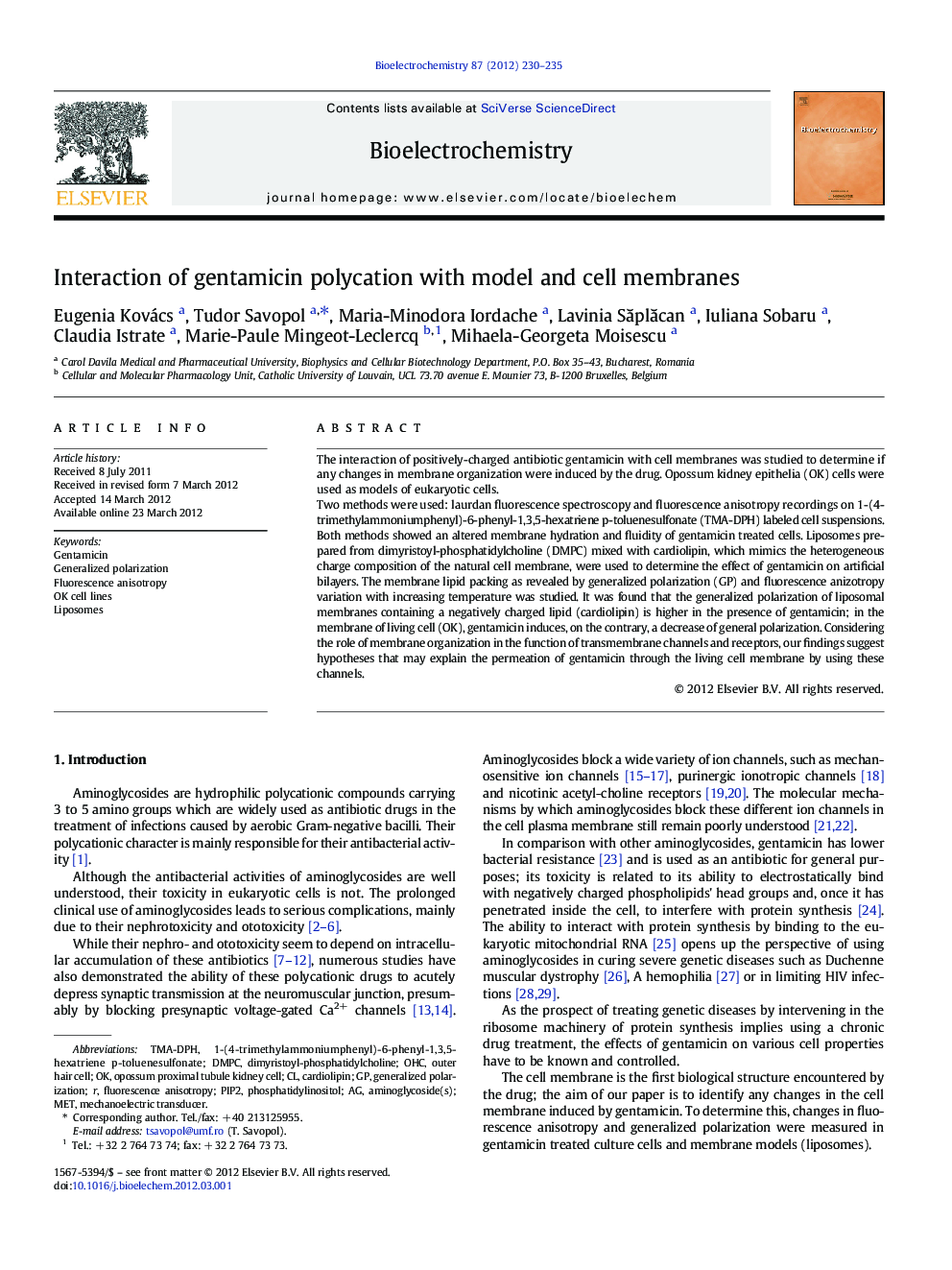| Article ID | Journal | Published Year | Pages | File Type |
|---|---|---|---|---|
| 1274461 | Bioelectrochemistry | 2012 | 6 Pages |
The interaction of positively-charged antibiotic gentamicin with cell membranes was studied to determine if any changes in membrane organization were induced by the drug. Opossum kidney epithelia (OK) cells were used as models of eukaryotic cells.Two methods were used: laurdan fluorescence spectroscopy and fluorescence anisotropy recordings on 1-(4-trimethylammoniumphenyl)-6-phenyl-1,3,5-hexatriene p-toluenesulfonate (TMA-DPH) labeled cell suspensions. Both methods showed an altered membrane hydration and fluidity of gentamicin treated cells. Liposomes prepared from dimyristoyl-phosphatidylcholine (DMPC) mixed with cardiolipin, which mimics the heterogeneous charge composition of the natural cell membrane, were used to determine the effect of gentamicin on artificial bilayers. The membrane lipid packing as revealed by generalized polarization (GP) and fluorescence anizotropy variation with increasing temperature was studied. It was found that the generalized polarization of liposomal membranes containing a negatively charged lipid (cardiolipin) is higher in the presence of gentamicin; in the membrane of living cell (OK), gentamicin induces, on the contrary, a decrease of general polarization. Considering the role of membrane organization in the function of transmembrane channels and receptors, our findings suggest hypotheses that may explain the permeation of gentamicin through the living cell membrane by using these channels.
►Effects of gentamicin on biophysical properties of membranes were studied. ►Gentamicin affects membranes only if they contain negatively charged phospholipids. ►In cells, gentamicin influences the thermal behavior of membranes. ►Results are explained in terms of an electrostatic interaction gentamicin-membrane.
